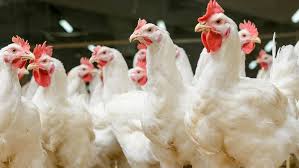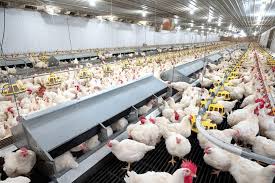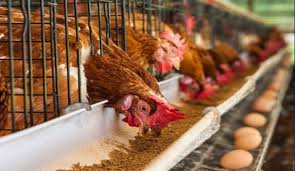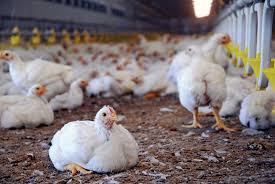Poultry Farming Techniques play a crucial role in the agricultural sector, focusing on the rearing of birds for meat and eggs. This method has gained immense popularity due to its ability to provide a significant source of protein for the global population.
As demand for poultry products continues to rise, farmers must adopt efficient techniques to ensure sustainable production.
Poultry farming can be categorized into various systems, each suited to different farming goals and environmental conditions. These systems include intensive, semi-intensive, and extensive farming. Intensive farming focuses on maximizing production within confined spaces, using advanced technology and specialized feed to ensure rapid growth and high egg production.
This method allows for a large number of birds to be raised in a relatively small area, significantly increasing yield. Semi-intensive farming balances both free-range and confined systems, giving birds more space while still utilizing controlled feeding and management practices.
Extensive farming, on the other hand, allows birds to roam freely, promoting natural behaviors and providing them with access to a more varied diet.
Successful poultry farming also hinges on proper management practices. This includes maintaining optimal living conditions, such as temperature, humidity, and ventilation, which are vital for the birds’ health and productivity.
Effective biosecurity measures must also be implemented to prevent disease outbreaks, which can have devastating effects on poultry populations and farm profitability. Regular health checks, vaccinations, and maintaining a clean environment are essential components of a good management plan.
Nutrition is another critical aspect of poultry farming techniques. Providing a balanced diet tailored to the specific needs of the birds at different life stages is essential for optimal growth and production.
Poultry feed should contain adequate levels of protein, vitamins, and minerals to support health and enhance egg production or meat quality. Understanding the nutritional requirements of different poultry species helps farmers make informed decisions about feed formulations, ensuring their flocks remain healthy and productive.
Furthermore, poultry farming techniques also encompass breeding practices. Selecting the right breeds for specific production goals is essential for achieving optimal results.
For instance, broilers are typically raised for meat production due to their fast growth rates, while layers are bred primarily for egg production. Farmers must stay updated on genetic advancements and breeding technologies to improve flock performance and resilience against diseases.
Incorporating technology in poultry farming techniques is becoming increasingly important. Innovations such as automated feeding systems, climate control, and monitoring devices can enhance efficiency and productivity. These technologies help farmers monitor the health and growth of their birds closely, allowing for timely interventions when necessary.
Choosing the Right Poultry Breeds

1. Purpose of Farming: Determine the primary purpose of your poultry farm whether for meat, eggs, or ornamental purposes. This decision will guide your breed selection. For example, broilers like the Ross or Cobb are excellent for meat production, while layers like the Leghorn or Rhode Island Red are ideal for egg production.
2. Climate Adaptability: Choose breeds that are well-suited to your local climate. Some breeds are more resilient to extreme temperatures, while others may thrive in milder conditions. Research breed characteristics to find the best match for your environment.
3. Growth Rate and Productivity: Consider the growth rate and productivity of the breeds you are interested in. Fast-growing breeds may provide quicker returns, while heritage breeds often require more time but offer unique flavors and higher market value.
4. Temperament and Behavior: Different breeds have varying temperaments, affecting their ease of management. Some breeds are more docile and friendly, making them suitable for families or educational purposes, while others may be more aggressive or skittish.
5. Disease Resistance: Look for breeds with a reputation for good health and disease resistance. Stronger breeds can reduce veterinary costs and enhance overall farm productivity.
Essential Equipment for Poultry Farming
1. Feeding Equipment: Use appropriate feeders to ensure that all birds have access to food. Options include trough feeders, tube feeders, or automatic feeders, depending on the size of your operation.
2. Watering Systems: Provide clean and fresh water at all times. Choose from various watering systems, such as nipple drinkers, water troughs, or automatic waterers, to maintain hydration and reduce waste.
3. Housing Equipment: Equip poultry housing with nesting boxes, roosts, and perches. Nesting boxes should be comfortable and adequately sized for the breed to encourage egg laying.
4. Climate Control Systems: Depending on your climate, you may need heating, cooling, or ventilation systems to maintain optimal temperatures and air quality in poultry housing. This equipment is essential for the health and productivity of the birds.
5. Biosecurity Measures: Implement biosecurity equipment, such as footbaths, hand sanitizers, and secure fencing, to protect your flock from disease. Proper biosecurity protocols can help minimize health risks.
Read Also: Apple Maggot: Description, Damages Caused, Control and Preventive Measures
Housing and Space Requirements

1. Space Allocation: Provide adequate space for each bird to ensure their comfort and well-being. General guidelines suggest a minimum of 2-3 square feet per bird for indoor housing and 8-10 square feet for outdoor space in free-range systems.
2. Design Considerations: Design poultry housing with proper ventilation, insulation, and protection from predators. The housing should be easy to clean and maintain to prevent disease outbreaks.
3. Nesting and Roosting Areas: Create designated nesting and roosting areas within the housing. Nesting boxes should be placed in quiet, dimly lit areas to encourage laying, while roosts should be elevated to provide safe sleeping spaces.
4. Outdoor Access: If possible, provide outdoor access for your poultry to promote natural behaviors and improve their quality of life. Free-range systems allow birds to forage, exercise, and engage in social interactions.
5. Hygiene Practices: Maintain cleanliness in housing to prevent the spread of disease. Regularly clean and disinfect equipment, remove waste, and manage litter to promote a healthy environment for your poultry.
Feeding and Nutrition for Poultry
1. Balanced Diet: A balanced diet is essential for optimal growth, health, and productivity in poultry. Feed should contain the right mix of carbohydrates, proteins, fats, vitamins, and minerals. Common ingredients include corn, soybean meal, and vitamins.
2. Age and Purpose-Specific Feed: Different poultry species and age groups require specific nutritional needs. For example, chicks need a higher protein diet for growth, while layers need a calcium-rich diet to support egg production. Formulate feed based on the age and purpose of the birds.
3. Access to Fresh Water: Provide clean, fresh water at all times. Proper hydration is crucial for digestion, nutrient absorption, and overall health. Regularly check and clean water sources to prevent contamination.
4. Feeding Techniques: Use various feeding techniques, such as ad libitum feeding (free choice) or restricted feeding, depending on your production goals. Automatic feeders can help ensure consistent access to food.
5. Nutritional Supplements: Consider adding supplements, such as probiotics or vitamins, to support gut health and enhance overall performance. Consult a veterinarian or nutritionist for recommendations tailored to your flock’s needs.
Health Management and Disease Prevention
1. Regular Health Checks: Conduct routine health assessments to monitor for signs of illness, such as lethargy, coughing, or changes in egg production. Early detection can prevent disease outbreaks.
2. Vaccination Program: Implement a vaccination schedule to protect your flock from common poultry diseases, such as avian influenza, Newcastle disease, and Marek’s disease. Consult a veterinarian for a tailored vaccination plan.
3. Biosecurity Measures: Establish strict biosecurity protocols to minimize disease risks. Limit visitor access, use footbaths, and maintain cleanliness in housing and equipment to prevent contamination.
4. Nutrition and Hygiene: Provide a balanced diet and maintain a clean environment to support overall health. Regularly clean housing and remove waste to reduce the risk of disease outbreaks.
5. Treatment Protocols: Develop treatment protocols for common ailments and train staff to recognize symptoms. Knowing when to call a veterinarian for assistance is crucial for timely intervention.
Breeding Techniques in Poultry Farming
1. Selecting Breeding Stock: Choose healthy and productive breeding stock based on desirable traits, such as growth rate, egg production, and disease resistance. Genetic evaluation helps enhance breeding decisions.
2. Natural Breeding: Allow selected males and females to mate naturally. This traditional method can work well, especially in smaller flocks, but may limit genetic diversity.
3. Artificial Insemination (AI): For larger operations, consider artificial insemination to utilize superior genetics without maintaining males. AI can improve genetic diversity and production traits.
4. Record Keeping: Maintain detailed records of breeding dates, genetics, and health history. Good record-keeping helps manage breeding programs effectively and track progress.
5. Monitoring Reproduction: Closely monitor the reproductive health of breeding stock. Provide proper nutrition and housing conditions to support successful mating and hatching.
Read Also: Hookworms: Description, Damages Caused, Control and Preventive Measures
Egg Production and Management

1. Nesting Boxes: Provide comfortable and secure nesting boxes for hens to lay eggs. Boxes should be placed in quiet areas, lined with clean bedding, and adequately sized to accommodate the breed.
2. Egg Collection: Regularly collect eggs to prevent breakage and maintain freshness. Consider using automatic egg collection systems for larger operations to streamline the process.
3. Proper Storage: Store collected eggs in a cool, dry place, ideally at a temperature of 45°F (7°C). Proper storage helps maintain egg quality and extends shelf life.
4. Grading and Packaging: Grade eggs based on size and quality before packaging. Use appropriate packaging to protect eggs during transport and sale, ensuring they reach consumers in good condition.
5. Monitoring Production: Track egg production rates and monitor for any changes. A sudden drop in production can indicate health issues or management problems that need addressing.
Meat Production Practices
1. Choosing the Right Breeds: Selecting appropriate breeds is crucial for meat production. Fast-growing broiler breeds, such as Ross and Cobb, are specifically bred for meat efficiency, providing higher yields in a shorter time frame. Consider factors such as growth rate, feed conversion ratio, and meat quality when choosing breeds.
2. Nutrition Management: Provide a balanced diet tailored to the nutritional needs of broilers at various growth stages. Starter feeds should be high in protein to support rapid growth, while finisher feeds should be formulated to promote muscle development and optimal weight gain.
3. Housing and Space Requirements: Ensure adequate housing that provides enough space for the birds to move around comfortably. Overcrowding can lead to stress, aggression, and poor meat quality. A general guideline is to provide at least 2 square feet per bird in indoor housing.
4. Growth Monitoring: Regularly monitor the growth of broilers to ensure they are reaching expected weight targets. Implement weight-checking protocols to identify any issues early and adjust feeding strategies accordingly.
5. Harvesting Techniques: Proper harvesting techniques are essential for maintaining meat quality. Ensure that birds are humanely handled and processed quickly to reduce stress, which can affect meat tenderness and flavor.
Waste Management in Poultry Farming
1. Waste Collection: Implement a systematic approach to collect manure and other waste materials regularly. This helps maintain cleanliness and hygiene in poultry housing, reducing the risk of disease.
2. Composting: Consider composting poultry waste to create a nutrient-rich fertilizer for crops. Composting not only reduces waste but also helps minimize odors and pathogens, promoting a healthier environment.
3. Nutrient Management: Test manure for nutrient content to effectively apply it to crops. Understanding nutrient levels in waste helps prevent over-fertilization and protects soil and water quality.
4. Environmental Regulations: Stay informed about local environmental regulations regarding waste management. Compliance with these regulations is essential for sustainable farming practices and protecting natural resources.
5. Runoff Prevention: Establish buffer zones around water bodies to prevent nutrient runoff from poultry waste. This practice helps protect aquatic ecosystems and maintains water quality.
Marketing and Selling Poultry Products
1. Understanding Your Market: Research local and regional markets to understand consumer preferences and demand for poultry products. Identify your target customers, such as restaurants, grocery stores, or direct consumers.
2. Branding Your Products: Develop a strong brand identity that highlights the quality and uniqueness of your poultry products. Emphasize aspects such as organic practices, free-range options, or humane treatment to attract consumers.
3. Establishing Sales Channels: Explore various sales channels, including farmers’ markets, online platforms, and local grocery stores. Diversifying your sales channels can help reach a broader audience and increase sales.
4. Quality Assurance: Ensure high-quality standards for your poultry products. Regularly check for freshness, proper packaging, and compliance with health regulations. Quality assurance builds trust with consumers and encourages repeat business.
5. Engaging with Customers: Build relationships with customers through social media, newsletters, or community events. Engaging with your audience helps create loyalty and provides valuable feedback for improving your products.
Do you have any questions, suggestions, or contributions? If so, please feel free to use the comment box below to share your thoughts. We also encourage you to kindly share this information with others who might benefit from it. Since we can’t reach everyone at once, we truly appreciate your help in spreading the word. Thank you so much for your support and for sharing!
Read Also: Best Organic Fertilizer for Vegetables

